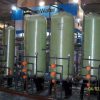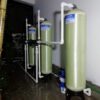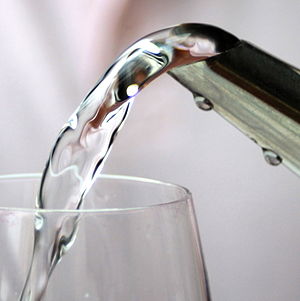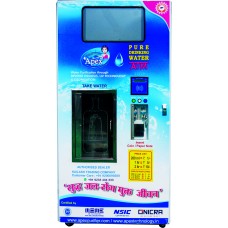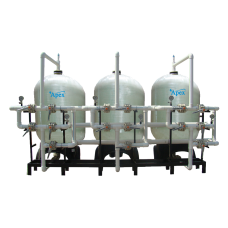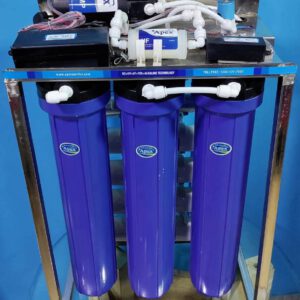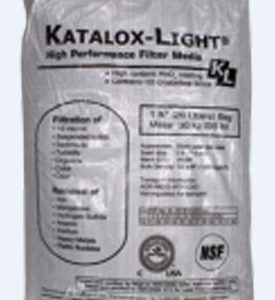Description
The study describes the removal of fluoride from drinking water using modified immobilized activated alumina (MIAA) prepared by sol-gel method. The modification was done by adding a specific amount of alum during the sol formation step. The fluoride removal efficiency of MIAA was 1.35 times higher as compared to normal immobilized activated alumina. A batch adsorption study was performed as a function of adsorbent dose, contact time, stirring rate, and initial fluoride concentration. More than 90% removal of fluoride was achieved within 60 minutes of contact time. The adsorption potential of MIAA was compared with activated charcoal which showed that the removal efficiency was about 10% more than the activated charcoal. Both the Langmuir and Freundlich adsorption isotherms fitted well for the fluoride adsorption on MIAA with the regression coefficient R2 of 0.99 and 0.98, respectively. MIAA can both be regenerated thermally and chemically. Adsorption experiments using MIAA were employed on real drinking water samples from a fluoride affected area. The study showed that modified immobilized activated alumina is an effective adsorbent for fluoride removal.
1. Introduction
Fluoride is present in ground water coming either from natural sources like weathering and volcanic processes or from wastewater of industries like fertilizer, glass, ceramic, brick, iron works, and electroplating [1]. Fluoride has both beneficial and harmful effects on the human health depending upon its level. Among the beneficial effects of fluoride in human body, strengthening of bones and prevention from tooth decay are significant. The permissible limit of fluoride in drinking water is 1.5 mg/L according to the National Standards for Drinking Water Quality of Pakistan [2] and the World Health Organization [3]. Above this limit, fluoride can lead to various diseases such as skeletal and dental fluorosis, brittle bones, cancer, infertility, brain damage, Alzheimer’s syndrome, and thyroid disorder [4].
The United Nations Environmental Program (UNEP) estimates that the numbers of individuals affected by fluorosis are in the tens of millions across 25 countries in both developed and developing nations [5]. A number of such cases have been identified in Pakistan where people suffered from harmful diseases due to industrial discharge of fluorides. In July 2000, a tragic situation was reported in Manga Mandi area (near Lahore, Punjab) where level of fluoride reached up to 20 mg/L in drinking water that led to the bone and teeth deformities in local people
The techniques available for defluoridation include coagulation-precipitation, membrane process, ion exchange, and adsorption processes. Although coagulation-precipitation (also known as Nalgonda technique) is an effective and cheap method but its main disadvantage is the generation of harmful waste products. The membrane process is mainly the reverse osmosis technique but it requires high maintenance cost due to fouling, scaling, and degradation of membrane. Similarly, the ion exchange process is very costly [7]. The adsorption method is considered more appropriate for defluoridation due to its simplicity, effectiveness, and economic viability [8].
The important adsorbents that have been tested for the fluoride removal include activated alumina [9], activated charcoal [10], zeolite [11], biosorbents [12], and nanosorbents [13]. Activated charcoal is considered as a universal adsorbent because of its applications and viability. Tembhurkar and Dongre studied the removal of fluoride using activated charcoal [14]. Activated alumina is also an efficient adsorbent for fluoride removal from drinking water but it has limited regeneration capacity and slow rate of adsorption [15].
Several studies have been conducted to increase the efficiency of activated alumina for defluoridation. In a study, alum impregnated activated alumina was used to remove fluoride from drinking water with the removal efficiency of 99% at pH 6.5 [16]. Similarly, another study reports the adsorption equilibrium and kinetics of fluoride removal using sol-gel-derived activated alumina adsorbent [17]. In this study, calcium oxide and manganese oxide coating were done on sol-gel-derived activated alumina to enhance its fluoride removal efficiency.
The main challenge encountered during the adoption studies is the separation of adsorbent after use from water samples. Generally, filtration is employed for the separation of powdered adsorbents. The aim of the present study was to prepare an immobilized adsorbent in the form of granules that could easily be separated from water without undergoing filtration and centrifugation processes. For this purpose, sol-gel method has been adopted [18] to prepare immobilized activated alumina with uniform surface properties. The immobilized activated alumina has further been modified by adding alum to enhance its adsorption capabilities. The modified immobilized activated alumina (MIAA) was tested for the treatment of water from fluoride affected Manga Mandi area (near Lahore, Pakistan).


